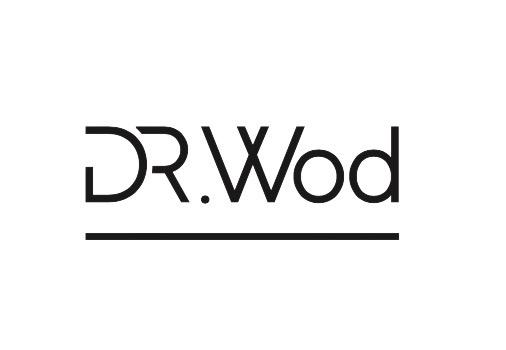PDO Threads

At Dr Wod Cosmetic Clinic in Shepparton, Victoria, our PDO (Polydioxanone) threads offer a non-surgical option that may provide strengthening effects and may stimulates collagen production for 9-12 months .
How It Works:
PDO thread treatment involves inserting fine, absorbable threads into the skin to help create a firming effect. These threads may provide immediate support and gradually stimulate your body’s natural collagen production, resulting in smoother, firmer skin.

Our Approach:
We begin with a detailed consultation to determine the best treatment plan for your needs. Our skilled practitioners use precise techniques to place the PDO threads, ensuring a comfortable experience.
What are Threads made of ?
PDO threads are made from a biodegradable synthetic polymer called polydioxanone (PDO). This material is medical-grade, biocompatible, and has a long-standing history of safe use in surgical sutures. Over time, PDO threads naturally dissolve within the body, typically turning into harmless byproducts like water and carbon dioxide
What are the After Care Instructions?
- For 48 hours post treatment you can apply a cold compress on the treated area if required.
- No pressure is to be exerted on the face.
- Drink plenty of fluids, avoid very hot drinks and alcohol.
- Avoid smoking.
- No sauna or steam room use for 10 days post treatment
- Make up should be avoided for 24 hours post treatment, and thereafter a breathable foundation should be used.
Please note: it is completely normal to experience swelling, bruising and some discomfort after the treatment. You may also experience a tight, pulling feeling in the treated area also puckering or dimpling of the skin can happen which might take up to 3 weeks to settle.
How much does the procedure cost?
This varies between candidates, best to discuss this with the practitioner
FAQ
How does wrinkle reduction work?
It works by relaxing facial muscles, thereby may temporarily reduce and smoothen dynamic frown lines and wrinkles, i.e. those lines caused by movement of the muscles.
Who should not have wrinkle reduction?
- Had an allergic reaction to the ingredient in the past.
- Have a skin infection at the planned injection site.
- A disease that affects your muscles and nerves (such as amyotrophic lateral sclerosis [ALS or Lou Gehrig's disease], myasthenia gravis or Lambert-Eaton syndrome).
- Had any side effect from the product product in the past.
- A breathing problem, such as asthma or emphysema.
- Swallowing problems.
- Bleeding problems.
- Plans to have surgery.
- Had surgery on your face.
- Weakness of your forehead muscles, such as trouble raising your eyebrows.
- Drooping eyelids.
- Any other change in the way your face normally looks.
- Are pregnant or plan to become pregnant.
- Are breast-feeding or plan to breastfeed.
Do treatment results differ?
Yes, individual results may vary. To get the best results, it's important to go to a doctor who is experienced in administering these injections.
What conditions can be treated effectively with laser therapy?
- Vascular lesions
Well-defined lesions (abnormalities of the tissue, in this case the skin) that contain blood are usually amenable to laser therapy. These include unwanted blood vessels (‘broken capillaries’) on the face, and birth marks such as port wine stains. Depending on the size of the lesion, the number of laser treatments that are needed can range from 2 to 10 or more.
Laser therapy is also sometimes used for small varicose veins and spider veins.
- Pigmented lesions
Pigmented lesions that can be treated include: freckles; solar lentigos (liver, or age, spots); flat, pigmented seborrhoeic keratoses (age warts); and café au lait spots (light-tan spots). Laser treatments for pigmented lesions are generally spaced 6 or more weeks apart, to allow your body to get rid of the dispersed pigment.
- Tattoos/Not currently available
The principle of laser tattoo removal is basically the same as that of the removal of pigmented lesions, but the wavelength of the light beam needs to vary depending on the different ink pigments used in the tattoo. In general, homemade Indian ink tattoos and black tattoos respond most readily to laser removal. White tattoos do not usually respond to treatment. Red is relatively easy to remove, while yellow, orange and green are more difficult.
Skin that has been stained from nasal piercing or from iron injections also usually responds well to laser treatment.
- Hair removal
Laser-assisted hair removal is both efficient and long term. It works best on thicker, darker hairs, as these hair follicles absorb more light than do smaller, paler hair follicles. Most people find that the amount of hair is reduced by 70 per cent or more after the course of treatment. Laser hair removal also avoids the possibility of ingrown hairs. Sweating changes are sometimes noticed in the treated area.
- Signs of ageing
Laser resurfacing is used to help reverse the signs of ageing caused by sun damage. Signs of ageing include fine wrinkles and crinkly skin. Resurfacing is also useful in reducing the appearance of acne scars. Following treatment, your skin often takes several weeks to recover.
Laser resurfacing is a safer and more refined procedure than it used to be, but it is still not recommended for people with olive or pigmented skin because of the possibility of uneven skin tone or loss of colour from the skin after treatment.
- Scars
Whether scars of previous surgery, acne or post burn scar, can all be minimised by laser resurfacing, CO2 fractionated laser is in particular useful for these conditions.
Who can be a good candidate for PDO treatment?
PDO procedure is an option for adults with mild to moderate skin laxity, who keep up with healthy lifestyles and have maintained their weight for at least three months.
Who can be a good candidate for Double chin Treatment ?
The best candidate is an adult 18 years or older with moderate to severe fat beneath the chin. You might not be a good candidate if you have had or are planning to have facial surgery, if you have trouble swallowing, are pregnant or nursing, or have an infection or medical condition in or near the planned injection site.
